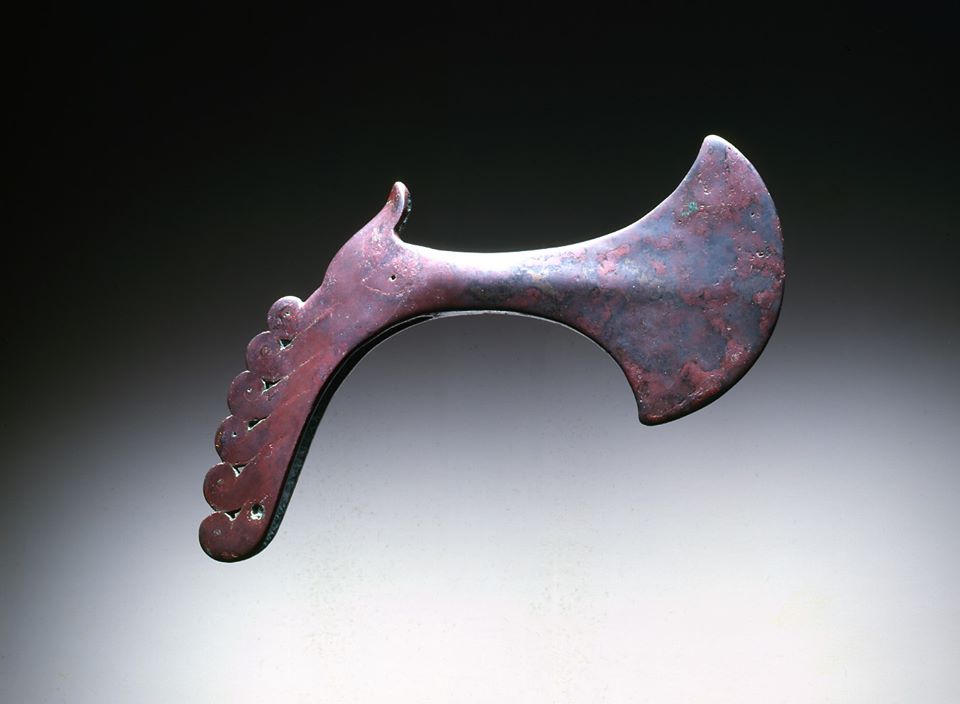Axes in the shape of a galloping horse are common in Luristan art. A thousand years earlier, we have here the ancestor of these objects: a ceremonial weapon made of pure copper, as its red colour testifies. The animal’s mane is clearly visible on the sloping handle on the left.

Iran, Kerman culture. Circa 2000 BC.
Photo Studio Ferrazzini Bouchet. Musée Barbier-Mueller
Characterized by pure lines, this zoomorphic axe-head probably represents a stylized horse protome. The mane depicted in spiral crests forms the shaft of the axe; it runs parallel to the missing organic handle. Given the inclination of the blade, the wedge, crescent in shape, loses its effectiveness. Through the symbiosis between weapon and animal, this ceremonial axe-head prefigures the Luristan shaft-hole axes.
The description by Jean Louis Zimmerman is an abstract from Ancient Art from the Barbier-Mueller, 1991.
